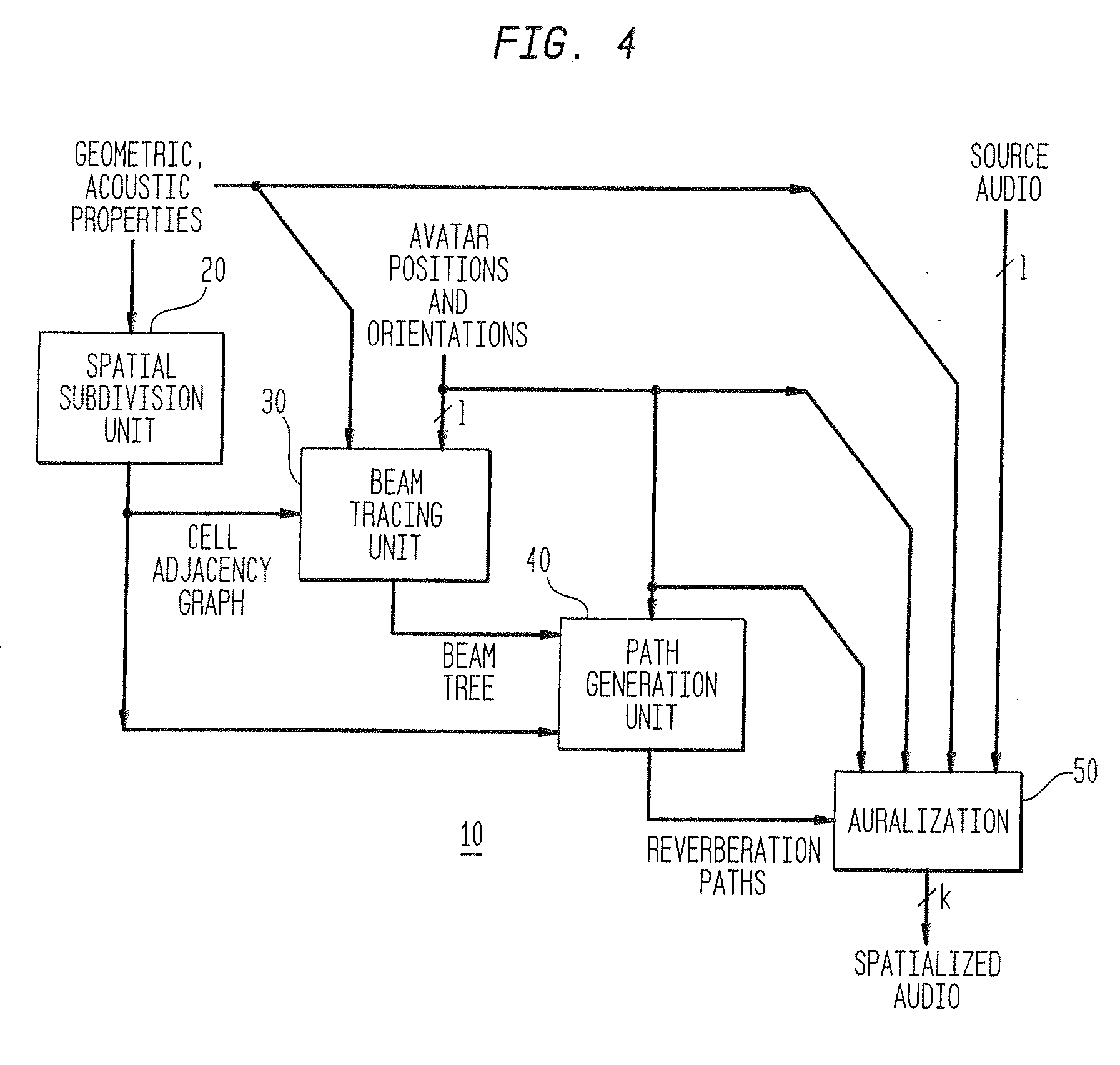Acoustic modeling apparatus and method using accelerated beam tracing techniques
a beam tracing and apparatus technology, applied in the field of apparatus and method for modeling acoustics, can solve the problems that the computational complexity of beam tracing typically increases exponentially with increasing reflections, and achieves the effect of avoiding redundancies, rapid computation of significant reverberation paths, and efficient finding reverberation paths
- Summary
- Abstract
- Description
- Claims
- Application Information
AI Technical Summary
Benefits of technology
Problems solved by technology
Method used
Image
Examples
Embodiment Construction
[0035] The following detailed description relates to an acoustic modeling apparatus and method which utilizes techniques for accelerating the computation of reverberation paths between source and receiver locations to accelerate tracing and evaluating acoustic reverberation paths, thus enabling rapid acoustic modeling for a virtual environment shared by a plurality of users.
System Overview
[0036]FIG. 4 illustrates an acoustic modeling system 10 according to an embodiment of the present invention that includes a spatial subdivision unit 20; a beam tracing unit 30; a path generation unit 40; and an auralization unit 50. It should be recognized that this illustration of the acoustic modeling system 10 as having four discrete elements is for ease of illustration, and that the functions associated with these discrete elements may be performed using a single processor or a combination of processors.
[0037] Generally, the acoustic modeling system 10 takes as input: 1) a description of th...
PUM
 Login to View More
Login to View More Abstract
Description
Claims
Application Information
 Login to View More
Login to View More - R&D
- Intellectual Property
- Life Sciences
- Materials
- Tech Scout
- Unparalleled Data Quality
- Higher Quality Content
- 60% Fewer Hallucinations
Browse by: Latest US Patents, China's latest patents, Technical Efficacy Thesaurus, Application Domain, Technology Topic, Popular Technical Reports.
© 2025 PatSnap. All rights reserved.Legal|Privacy policy|Modern Slavery Act Transparency Statement|Sitemap|About US| Contact US: help@patsnap.com



